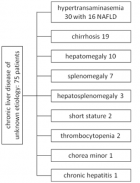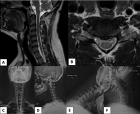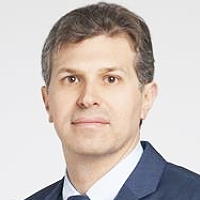Abstract
Mini Review
Current and emerging trends in oro-dental healthcare and cranio-maxillo-facial surgery
Ziyad S Haidar*
Published: 14 April, 2023 | Volume 8 - Issue 1 | Pages: 001-006
Dentistry is an ever-evolving field that has seen significant advances in recent years. This article sheds light on some of the current and emerging trends in oral health care, including digital dentistry, regenerative medicine, and the use of lasers. For example, digital dentistry involves the use of computer-aided design and manufacturing technology, which enables more accurate and efficient production of dental devices. On the other hand, regenerative medicine and nanoDentistry can be considered promising area that combines the use of stem cells, growth factors, biomaterials, and nanotechnology to regenerate damaged tissue and improve treatment outcomes. Lasers are increasingly being used in dentistry for a range of applications, including the treatment of gum disease and teeth whitening. Other developing technologies such as 3D printing and artificial intelligence are also being increasingly incorporated into dentistry, providing improved treatment options for our patients. Last yet definitely would/will not least, controlled drug delivery systems are being developed to deliver drugs to specific target sites in a localized and sustained manner, reducing the risk of adverse effects. Currently, these emerging trends are transforming the landscape of odontology and beyond. Hence, in this mini-Review, we explore such trends in oro-dental and cranio-maxillo-facial indications to highlight the potential benefits, advancements, and opportunities of applications for improved patient care.
Read Full Article HTML DOI: 10.29328/journal.johcs.1001042 Cite this Article Read Full Article PDF
Keywords:
Artificial intelligence; Biomaterials; NanoDenistry; Cranio-maxillo facial surgery; 3D printing; Regenerative medicine; BioSensing; Drug delivery; Digital dentistry; Trends
References
- Schwendicke F, Krois J, Gomez J. Artificial intelligence in dentistry: chances and challenges. J Dent Res 2021;100(1):9-14.
- Zecha JAEM, Raber-Durlacher JE, Nair RG. Detection and diagnosis of oral cancer: artificial intelligence and new technologies. J Oral Pathol Med. 2019; 48(10):771-777.
- Liu Y, de Groot JF, Klar RM. Biomaterials for craniofacial bone regeneration. J Dent Res. 2018; 97(5):506-515.
- Poggio C, Lombardini M, Dagna A. Ceramics and composite resins in dentistry: a review of types and clinical applications. Materials (Basel). 2021; 14(2):382. doi:10.3390/ma14020382
- Aggarwal H, Jain V, Shivakumar S, Singh RD, Sharma V. Bioactive glass in dentistry: a review. J Clin Diagn Res. 2017; 11(9):ZE06-ZE09. doi:10.7860/JCDR/2017/29448.10559
- Heintze SD. Clinical relevance of testing bonding performance of adhesive systems. Dent Mater. 2013; 29(4):e100-e124. doi:10.1016/j.dental.2013.01.004.
- Hutmacher DW. Scaffolds in tissue engineering bone and cartilage. Biomaterials. 2000 Dec;21(24):2529-43. doi: 10.1016/s0142-9612(00)00121-6. PMID: 11071603.
- Albuquerque MT, Valera MC, Nakashima M, Nör JE, Bottino MC. Tissue-engineering-based strategies for regenerative endodontics. J Dent Res. 2014 Dec;93(12):1222-31. doi: 10.1177/0022034514549809. Epub 2014 Sep 8. PMID: 25201917; PMCID: PMC4237634.
- Chien CH, Ho HO, Chen YJ. Biomaterials for salivary gland tissue engineering. J Dent Res. 2020; 99(7):714-722. doi:10.1177/0022034520924758.
- Gao C, Liu Y, Yuan Z, Li L, Zhang Y, Chen X, Zhang X. Hydroxyapatite/graphene oxide composite scaffolds for enhanced osteogenic differentiation of stem cells for bone regeneration. Biomaterials Science. 2021; 9(3): 1053-1063.
- Kim JY, Lee J, Lee SH, Choi SH. Collagen scaffolds loaded with bone morphogenetic protein-2 promote periodontal regeneration by enhancing attachment and proliferation of periodontal ligament cells. Journal of Dental Research. 2021; 100(1): 79-87.
- Lee SH, Kim YJ, Lee JW, Kim KT, Park JC, Cho DW. Adipose-derived stem cells and platelet-rich plasma for soft tissue regeneration in the craniofacial region. Journal of Craniofacial Surgery. 2020; 31(4): e327-e332.
- Lee H, Lee JY, Jeong YJ, Kim BS, Kim SW. Regeneration of oral mucosa with a decellularized extracellular matrix scaffold. Journal of Tissue Engineering and Regenerative Medicine. 2020; 14(6): 889-897.
- Chen Y, Zhang Z, Wang X, Jiang Y, Zhang X, Liu H, Xu B. Bone substitute material loaded with dental pulp stem cells for regeneration of mandibular condylar defects. Journal of Tissue Engineering and Regenerative Medicine. 2021; 15(5): 483-492.
- Albrektsson T, Johansson C, Johansson LA, Sennerby L. Bioactive glass implants in the temporomandibular joint: An experimental study in rabbits. Journal of Oral Rehabilitation. 2020; 47(7): 857-865.
- Schwarz F, Herten M, Sager M, Wieland M, Dard M, Becker J. Risk factors of plaque formation at the implant-abutment interface: a prospective study. J Periodontol. 2010; 81(10):1517-1523. doi:10.1902/jop.2010.100226.
- Kulkarni M, Mazare A, Schmuki P, Iglič A. Antibacterial and bioactive implant coatings. Mater Sci Eng R Rep. 2017; 119:1-27. doi:10.1016/j.mser.2017.
- Chen C, Chen X, Zhang Y, Lu X, Zhang L, Cheng Y. Silver nanoparticle coating on titanium implant surfaces inhibits bacterial adhesion and biofilm formation. Journal of Materials Science and Technology. 2021; 69: 1-10.
- Posa F, Di Stefano DA, Abdallah MN, Bortolini S, Martini D, Nocini PF. Chlorhexidine-containing polymer coating on titanium implant surfaces reduces biofilm formation in vitro. Journal of Biomedical Materials Research Part B: Applied Biomaterials. 2021; 109(5): 538-546.
- Ricci S, Terrer E, Peralbo-Molina Á, Manzanares-Céspedes MC, Viñas M, Álvarez M. The use of probiotic bacteria to inhibit the growth of pathogenic bacteria and biofilm formation on dental implant surfaces. Journal of Applied Microbiology. 2021; 131(6): 2824-2834.
- Agarwal A, Weisgerber DW, Chen X, Tannenbaum R. Oligosaccharide-based prebiotic treatment of dental implants reduces pathogenic bacteria and biofilm formation. ACS Applied Materials & Interfaces. 2021; 13(7): 8993-9003.
- Xu H. Biosensors for Detection of Oral Pathogens. Sensors. 2018; 18(11): 3717.
- Pauwels R. Emerging Trends in Oral Imaging: A Multidisciplinary Perspective. Radiology. 2019; 290(2): 502-513.
- Malhotra R. A Biosensor-Based Approach for Rapid Detection of Aggregatibacter actinomycetemcomitans in Subgingival Plaque. Journal of Periodontology. 2016; 87(6): 678-685.
- Wu Y. Aptamer-Based Biosensor for Rapid Detection of Porphyromonas gingivalis. Journal of Clinical Periodontology. 2020; 47(5): 636-644.
- Ahmed MU. Diagnostic Value of Salivary Matrix Metalloproteinase-8 and -9 in Oral Squamous Cell Carcinoma. Journal of Oral Pathology & Medicine. 2018; 47(9): 881-886.
- Marinho JO. Development of a Novel Biosensor for Detection of Carcinoembryonic Antigen (CEA) in Saliva. Biosensors & Bioelectronics. 2019; 141: 111411.
- Fried D. Imaging Caries Lesions and Lesion Progression with Polarization Sensitive Optical Coherence Tomography. Journal of Dental Research. 2013; 92(3): 214-219.
- Shi X. Review of Clinical Optical Coherence Tomography in Dentistry. Journal of Biophotonics. 2018; 11(10): e201800096.
- Zhu Y. Confocal Microscopy in Oral Biology: Current Applications and Future Perspectives. Archives of Oral Biology. 2019; 105: 81-91.
- Jampani ND, Nutalapati R, Dontula BS, Boyapati R. Applications of teledentistry: A literature review and update. J Int Soc Prev Community Dent. 2011 Jul;1(2):37-44. doi: 10.4103/2231-0762.97695. PMID: 24478952; PMCID: PMC3894070.
- Estai M, Bunt S. Best practices and recommendations for teledentistry during COVID-19: a systematic review. JDR Clin Trans Res. 2021; 6(3):256-268.
- Vandenbulcke J, Van Bael MJ, Kruth JP. Additive manufacturing of dental materials: A review. Materials Science and Engineering C. 2021; 121:111821.
- Abduo J, Lyons K, Bennamoun M. Trends in computer-aided manufacturing in prosthodontics: a review of the available streams. Int J Dent. 2014;2014:783948. doi: 10.1155/2014/783948. Epub 2014 Apr 8. PMID: 24817888; PMCID: PMC4000974.
- Duraccio D, Mussano F, Faga MG. Biomaterials for dental implants: current and future trends. J Mater Sci. 2015; 50(14):4779-4812. doi:10.1007/s10853-015-9059-0.
- Ahuja B, Mathur VB, Kaur G, Sandhu M, Kaur H. A review of 3D printing techniques and its applications in dental implants. J Oral Biol Craniofac Res. 2021; 11(1):1-7. doi:10.1016/j.jobcr.2020.07.003.
- Alharbi N, Wismeijer D, Osman RB. Additive Manufacturing Techniques in Prosthodontics: Where Do We Currently Stand? A Critical Review. Int J Prosthodont. 2017 September/October;30(5):474–484. doi: 10.11607/ijp.5079. Epub 2017 Jul 27. PMID: 28750105.
- Zandinejad A, Atai M, Pahlavanpour M. Applications of 3D printing in Dentistry: A review of literature. Rapid Prototyping J. 2016; 22(5):611-623. doi:10.1108/RPJ-07-2014-0086.
- Rechmann P, Charania A, Rechmann BM. Lasers in dentistry. J Calif Dent Assoc. 2019; 47(8):457-465.
- Arslan S, Karslioglu Y, Kahraman BB. The effect of laser application on the treatment of periodontal disease: a review of the literature. J Oral Health Craniofac Sci. 2020; 5(2):109-113.
- Fortin T, Isidori M, Bouchet H. Digital technologies in implant dentistry. Journal of prosthodontic research. 2015; 59(1): 34-46.
- Li W, Sun YC, Li Q, Chen J. Application of computer-aided design and manufacturing (CAD/CAM) in oral and maxillofacial surgery. Journal of International Medical Research. 2019; 47(5): 1855-1866.
- Liu Y, de Groot JF, Klar RM. Biomaterials for craniofacial bone regeneration. J Dent Res. 2018; 97(5):506-515.
- Abduo J, Lyons K, Bennamoun M. Trends in computer-aided manufacturing in prosthodontics: a review of the available streams. Int J Dent. 2014;2014:783948. doi: 10.1155/2014/783948. Epub 2014 Apr 8. PMID: 24817888; PMCID: PMC4000974.
- Lee H, Lee SW. Controlled drug delivery systems for oral cancer treatment: current status and future perspectives. Pharmaceutics. 2020; 12(6):532.
- Gupta AK, Gupta M. Synthesis and surface engineering of iron oxide nanoparticles for biomedical applications. Biomaterials. 2005 Jun;26(18):3995-4021. doi: 10.1016/j.biomaterials.2004.10.012. PMID: 15626447.
- Ahmed TA, Aljaeid BM. Preparation, characterization, and potential application of chitosan, chitosan derivatives, and chitosan metal nanoparticles in pharmaceutical drug delivery. Drug Des Devel Ther. 2016 Jan 28;10:483-507. doi: 10.2147/DDDT.S99651. PMID: 26869768; PMCID: PMC4734734.
- Pilloni A, Pompa G, Cattabriga M, Palma SD, Campus G. Chitosan nanoparticles for periodontal pathogens. A systematic review. European Journal of Clinical Investigation. 2019; 49(10):e13142.
- Gaharwar AK, Peppas NA, Khademhosseini A. Nanocomposite hydrogels for biomedical applications. Biotechnol Bioeng. 2014 Mar;111(3):441-53. doi: 10.1002/bit.25160. Epub 2013 Dec 6. PMID: 24264728; PMCID: PMC3924876.
- Lu M, Xia L, Zhou L, Zheng X, Jiang X, Kong L. Enhanced bone regeneration with BMP-2 loaded functionalized nanoparticle-hydrogel complex. Journal of Materials Chemistry B. 2017; 5(16):3034-44.
Similar Articles
-
Current and emerging trends in oro-dental healthcare and cranio-maxillo-facial surgeryZiyad S Haidar*. Current and emerging trends in oro-dental healthcare and cranio-maxillo-facial surgery. . 2023 doi: 10.29328/journal.johcs.1001042; 8: 001-006
Recently Viewed
-
Success, Survival and Prognostic Factors in Implant Prosthesis: Experimental StudyEpifania Ettore*, Pietrantonio Maria, Christian Nunziata, Ausiello Pietro. Success, Survival and Prognostic Factors in Implant Prosthesis: Experimental Study. J Oral Health Craniofac Sci. 2023: doi: 10.29328/journal.johcs.1001045; 8: 024-028
-
Bleeding from Varices: Still a Heavy Burden in Patients with CirrhosisAmitrano L*, Guardascione MA, Saviano S, Martino A, Lombardi G. Bleeding from Varices: Still a Heavy Burden in Patients with Cirrhosis. Ann Clin Gastroenterol Hepatol. 2023: doi: 10.29328/journal.acgh.1001043; 7: 035-037
-
Prevention of workplace violence in ED nursing using the implementation of an educational program and a new reporting toolMaziad Aladwan*,Ekbal Dalahmeh. Prevention of workplace violence in ED nursing using the implementation of an educational program and a new reporting tool. Clin J Nurs Care Pract. 2022: doi: 10.29328/journal.cjncp.1001039; 6: 001-008
-
Which women uses social Internet networks during pregnancy?Sylvie Viaux-Savelon*,Catherine Fouillet,Nicolas Bodeau,Jacky Nizard. Which women uses social Internet networks during pregnancy?. Clin J Obstet Gynecol. 2021: doi: 10.29328/journal.cjog.1001082; 4: 025-032
-
The Role of Mitochondria in Chronic Wound Healing (Mitotherapy): Signaling and Therapeutic ImplicationsSeyedeh Sara Azadeh*,Hoda Keshmiri Neghab. The Role of Mitochondria in Chronic Wound Healing (Mitotherapy): Signaling and Therapeutic Implications. Arch Biotechnol Biomed. 2025: doi: 10.29328/journal.abb.1001043; 9: 001-009
Most Viewed
-
Evaluation of Biostimulants Based on Recovered Protein Hydrolysates from Animal By-products as Plant Growth EnhancersH Pérez-Aguilar*, M Lacruz-Asaro, F Arán-Ais. Evaluation of Biostimulants Based on Recovered Protein Hydrolysates from Animal By-products as Plant Growth Enhancers. J Plant Sci Phytopathol. 2023 doi: 10.29328/journal.jpsp.1001104; 7: 042-047
-
Sinonasal Myxoma Extending into the Orbit in a 4-Year Old: A Case PresentationJulian A Purrinos*, Ramzi Younis. Sinonasal Myxoma Extending into the Orbit in a 4-Year Old: A Case Presentation. Arch Case Rep. 2024 doi: 10.29328/journal.acr.1001099; 8: 075-077
-
Feasibility study of magnetic sensing for detecting single-neuron action potentialsDenis Tonini,Kai Wu,Renata Saha,Jian-Ping Wang*. Feasibility study of magnetic sensing for detecting single-neuron action potentials. Ann Biomed Sci Eng. 2022 doi: 10.29328/journal.abse.1001018; 6: 019-029
-
Pediatric Dysgerminoma: Unveiling a Rare Ovarian TumorFaten Limaiem*, Khalil Saffar, Ahmed Halouani. Pediatric Dysgerminoma: Unveiling a Rare Ovarian Tumor. Arch Case Rep. 2024 doi: 10.29328/journal.acr.1001087; 8: 010-013
-
Physical activity can change the physiological and psychological circumstances during COVID-19 pandemic: A narrative reviewKhashayar Maroufi*. Physical activity can change the physiological and psychological circumstances during COVID-19 pandemic: A narrative review. J Sports Med Ther. 2021 doi: 10.29328/journal.jsmt.1001051; 6: 001-007

HSPI: We're glad you're here. Please click "create a new Query" if you are a new visitor to our website and need further information from us.
If you are already a member of our network and need to keep track of any developments regarding a question you have already submitted, click "take me to my Query."



















































































































































